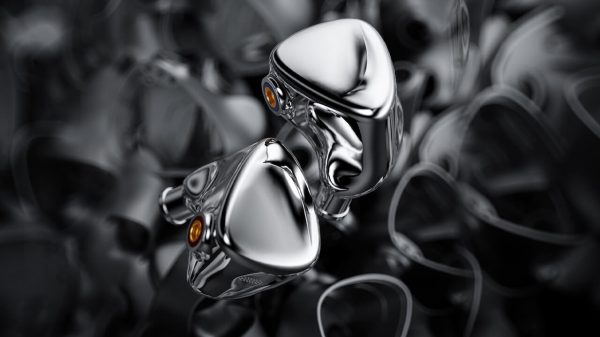Westone Audio is arguably the oldest IEM manufacturer in the United States and has been instrumental in regard to the introduction of other brands into the category.
I always chuckle when somebody remarks that the Westone UM series look like a copy of a Shure IEM; primarily because Westone was a key partner in the design of the original 215 and a sizeable number of the design elements trace back to engineers at Westone Audio.
Founded four decades ago, Westone started out designing balanced armatures and developing earphones using their new drivers. During those days, Westone was also an OEM/ODM for other companies as well as marketing their own products.
Early customers included Def Leppard and Rush. Those beginnings spawned both a universal line and a custom line of IEMs that have gone through several generations with the latest iterations being the Pro X series and Mach Series of universal IEMs and the ES series of custom-fit IEMs.
I discussed the Mach Series recently when reviewing the Mach 70 for those interested in learning more about their design process and history.
AM Pro X Line

The three models in the AM Pro X line are the single driver X10, the dual driver X20, and the triple driver X30 model with each offering a different signature that will benefit different performers. The single driver X10 is perhaps best for strings and acoustic music as it trails off at both ends with more focus on the midrange.
The AM Pro X20 takes the opposite approach with two drivers; one focused on the low end and the other on the treble with a bit of a dip in the midrange. The AM Pro X20 is likely to be a good fit for drummers, bass players and others, where a bit of extra low end presence is desired.
The AM Pro X30 adds a third driver specifically for the midrange and provides a thicker, richer signature, making it best for guitarists and singers who require a more balanced presentation overall.

Pass-thru Listening
This review is on the new AM Pro X20 which is an extension of the Pro X series with the ambient sound integration technology developed by Westone to allow performers to hear their monitor mix in full detail while still hearing the crowd, congregation, or fellow performers.
These are also a good option for those who want to hear ambient noises while listening to their music. It seems like there is a pendulum that has swung from stage monitors where all the outside noises were audible to sealed IEMs to where none of the outside noises were audible.
More recently, some bands began putting mics out in the crowd and adding that back into their mix or looking for technologies that allowed some outside noises in while still focusing on the mix.
The Passive Ambiance filters allow ambient sound in at less than full volume so don’t expect average conversations to cut through music at normal listening levels.
Instead, this technology is allowed to let some crowd noise sneak into the mix. Think for a moment about a stage show at a large arena; sound levels in the crowd can reach 115-130dB.
Using stage monitors only adds to the noise that reaches the performers’ ears and creates an unsafe situation. Even allowing the noise of the crowd in at full volume is unsafe.
Instead, the filters reduce outside noise by roughly 20dB (it is somewhat frequency dependent). This means that 115db noise is now passed in at 95dB which is still quite loud, but is more roughly equivalent to the normal listening volume when performing; allowing the performer to stay connected to the audience and stay safe.

Design & Comfort
That ambient feature is also the reason the AM Pro X line ends at 30 where the earlier Pro X series has a model 50 as its flagship. There simply was not room in the shell to add 5 drivers and the ambient port technology.
The Pro X series shells are clear polymer in a semi tear-drop shape very similar to the earlier W series and the Shure IEMs and is small enough that fit and comfort are good for all but the smallest ears.
The Westone Pro X shell was one of the first my daughter could wear comfortably in her early teens and is a frequent recommendation for those with smaller ears.
Connectors are the Estron T2 which are effectively a highly improved mmcx style that allows the cable to turn in the socket without losing connectivity whilst addressing the shortcomings of the original mmcx.
The provided cable is a 4 strand twist from the 90° 3.5mm jack to the splitter and then dual wire twist up to the earhooks and T2 connectors.
The cable is very pliable, lightweight, and narrow as is typical of Estron offerings, but less tangle prone than the Superbax style cable shipped with the Mach Series.

Included Accessories
The kit finishes up with a hard case, a soft carry bag, cable tie, 10 sets of tips, and a cleaning tool. The ear tips are provided in two different styles with one being foam and having a more squared off design, whilst the silicone are more rounded. Both styles feature a deeper side-wall than most other brands on the market.
Westone IEMs use narrow bore nozzles, so Comply 100 Series Foams are available on the aftermarket if the shape of the Westone provided tip is not comfortable.
I prefer the rounded shape rather than the squared off design but it does sacrifice a bit of isolation when you compare them. To me, they make perfect sense on an IEM where ambient noise is part of the equation. Another benefit is that they remain in place and proved to be rather durable in a performance environment.

Sound Quality
In my listening sessions, I found the AM Pro X20 to be a lively performer with good dynamics and a bit of a bass boost centering around 150Hz before gradually tapering off as it moves up the frequency range.
The sub bass rolls off fairly high with a notable drop-off below 45Hz; the mid bass is much more of the focus with impressive levels of impact and detail.
The midrange do step back slightly, particularly the lower midrange which impacts the presentation of male vocals. There is more than enough weight and clarity, but they do not get pushed forward of the instrumentation and some might feel that they sound slightly recessed.
Guitar has good tonality but again is not emphasized in the mix.
As you move further up in the range and into the upper midrange, strings and female vocals are presented with greater emphasis, detail, and presence. Female vocals are also pushed out further in front of the instrumentation in comparison to their male counterparts.
Likewise, the lower treble features additional emphasis providing good percussion snap and cymbals are presented with more than enough presence and detail. That rise continues and provides a bit more energy at 6kHz before dropping off again, so a bit of EQ may be needed there for the treble sensitive.
There is a second lift at about 10kHz that helps add some air and sparkle to the top end and combined with the ambient feature gives the AM Pro X20 a larger soundstage than expected for an IEM.
The soundstage is a bit wider than deep, but overall depth was still better than expected and the AM Pro X20 has enough height to allow vocals to present themselves above the instruments.
Positions are well defined in space and movements are easily tracked as well. There is some mild compression of the lows as tracks get busier and more complex.

Final Thoughts
As a bass player, I found the AM Pro X20 to be a good match for the things I listen for when playing and a fun listen when used for more casual listening.
The ‘V’ signature provides good energy for popular genres and the emphasis on the mid bass and upper midrange, along with sufficient lower treble energy is a good match for hip-hop, pop, and rock music.
Large orchestral pieces and church choirs may be better served by the AM Pro X30 that is a bit more balanced and provides more detail in the midrange than the X20.
For those looking for an entry level performance monitor that allows enough ambient sound through to retain a connection to the audience and enough of the percussion and singer to keep time, the AM Pro X20 from Westone Audio is a great place to start.
Where to buy: $399 $341 at Amazon


































